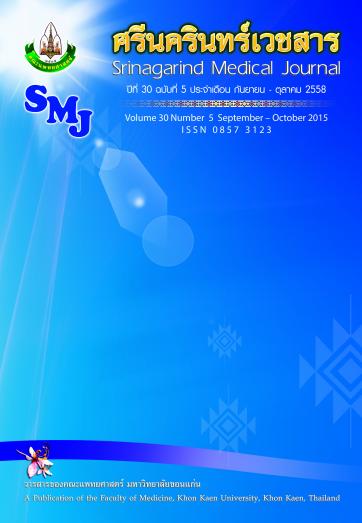Walking Devices and Ability of Community Ambulation in Patients with Stroke
คำสำคัญ:
Cerebrovascular accident, Hemiplegia, Ambulatory device, Walking ability, Community participationบทคัดย่อ
Background and Objectives: Patients with stroke usually impair walking ability, particularly ability of community ambulation. Thus a walking device is utilized to promote mobility of the patients. However, there is no existing report on the use of walking device and its relationship with ability of community ambulation. This study investigated the proportion and reasons of using a walking device, and the relationship between walking device use and ability of community ambulation in chronic and independent ambulatory patients with stroke.
Methods: Ninety five subjects from several communities were interviewed for the requirement of walking devices and ability of community ambulation using the criteria that reported in a previous study.
Results: Sixty four percents of the subjects used a walking device, mostly according to their own determination and prescription of medical professionals to prevent falls. Fifty three percents of the subjects could walk in a community and more than 50% of these subjects did not use a walking device. Walking with a walking device significantly reduce the possibility of community walking of the subjects (adjusted odds ratio = 0.087, p<0.001).
Conclusions: The proportion of walking device use in this study was higher than that reported previously. The use of a walking device reduced the possibility of community ambulation of the subjects. The findings may be used to promote functional ability of the patients. Nevertheless, a cross-sectional design may not be able to clearly confirm causal relationship of the findings. A further prospective study in subjects with different stages of stroke may provide a clearer outcome.




